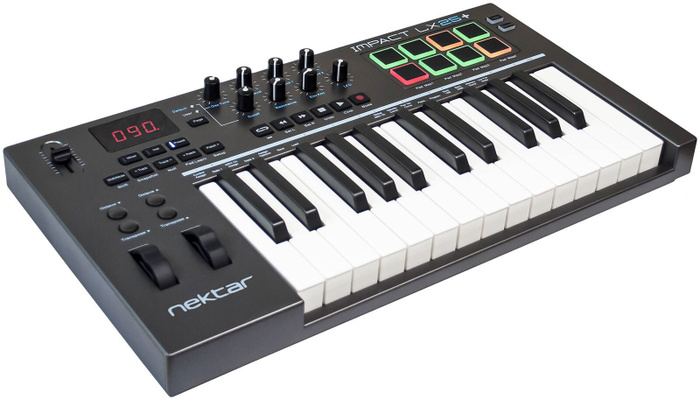
Mastering Music Production: A Guide To Keyboard Controller MIDI
Creating music is just like painting a canvas. It is a mix of imagination, technical skill, and a pinch of magic. This involves the digital magic that encompasses its fold, such as the keyboard controller MIDI, which happens to be king.
Knowing the keyboard controller, MIDI is your hidden weapon if you are interested in mastering the production of music.
In this article, we explain all aspects associated with the keyboard controller MIDI and travel through the globe of MIDI. Moreover, arm you with the necessary knowledge that can help you boost your production activities like never before.
Unraveling the Mystery of MIDI

Let’s solve the MIDI riddle before we plunge mindlessly into the world of keyboard controller MIDI.
MIDI – or the universal language of music – is a digital system that allows electronic instruments to communicate with each other. MIDI was developed in the early 1980s and has become the basis for modern music production.
The fundamental component of MIDI is a set of data signals that describe musical events like notes being played, their duration, and even their velocity. This information is a collection of commands that can be used to operate other electronic devices rather than actual audio.
Keyboards, synthesizers, and drum pads may all produce MIDI messages, which can then be used to activate the sound of other MIDI-compatible instruments or software.
The Power of Keyboard Controller MIDI

The keyboard controller MIDI is one of the key tools in the arsenal used by music producers. However, it bridges the gap separating today’s DAWs and the former piano-based keyboards. Why it’s a game-changer is as follows:
1. Originality of Thought
The use of MIDI keyboard controllers provides an option for musicians and producers to make their crafts more tactful and expressive. Like playing a standard piano with velocity-sensitive keys, you can vary the volume of your notes depending on your desires. It makes your sound “dynamically” different from being generated by the mere use of the mouse and keyboard.
2. Integration with DAWs
Keyboard control of most MIDI units is highly compatible and works well with modern digital audio workstations (DAW). This enables you to play and change virtual instruments, tweak parameters, and record MIDI into software.
3. Flexibility
The keyboard controller MIDI, which is quite adaptable, is one of the nicest things. The MIDI Keyboard can be the ideal fit for you if beat-making, analog synths, or Bach pianos are your things.
4. Sound Design
MIDI goes beyond providing note playbacks on the keyboard controller. It is also a great sound design tool. The virtual instruments and effects will be shaped and re-shaped by pressing knobs, faders, and assignable buttons, enabling you to create distinctive soundscapes.
Choosing the Right Keyboard Controller

When choosing a MIDI keyboard, one should consider the size, number of keys, and additional functions. Smaller variants have better portability as well as operation on smaller workstations, while bigger keyboard layouts with extra keys are ideal for playability and range.
To enhance workflow, consider adding more tools like drum pads, knobs, and sliders, so you have more power over music production.
Learning MIDI Keyboard Controller

It’s time to learn some MIDI basics for you to begin using your preferred keyboard controller. Here’s how to utilise this fantastic tool to its fullest potential:
1. Learning the Fundamentals
Start with the fundamentals. Find out the right ways of hooking your MIDI into the rig or your PC. Learn about your DAW, identify virtual instruments, and get familiarised with them. Be familiar with the main features/shortcuts for fast working.
2. Exercise, Exercise, Exercise
It is possible to learn how to play a MIDI keyboard just like any other musical instrument. Regular practice is good for better muscle memory and perfect playing technique. Try different ways of playing around and distinctive ways of using sound; they are uniquely for you.
3. Examine sound engineering
Explore sound design using the remaining keyboard controls. Twist filters, adjust synthesiser settings, mess with effects, and automate changes on the fly. This, therefore, gives your music a character and depth.
4. Capture and modify MIDI
Find out how to record MIDI data into your DAW. Refine your delivery using MIDI editors to polish your performance. Perfect quantization, timing, and note velocity are among these.
5. Test out digital instruments
It has a very big market, i.e virtual instruments. Try and experiment with synth, piano, and drum machines. Switch quickly between multiple instruments using a keyboard controller MIDI.
6. Cooperate and Exchange
The controller keyboard MIDI can act as a reliable teamwork equipment. It will enable you to share MIDI files with musicians or producers so that they can collaborate with you or you with them. This opens up avenues for innovative dialog.
Bottomline
Learning music production is a thrilling journey with vast potential. Your reliable road partner is the MIDI keyboard controller. It is giving one a chance to sing, regulate how loud one’s voice sounds, and be able to put into practice that which you feel and love musically.
Keep in mind that passion, craft, and imagination are equally essential as far as tools are concerned in your attempt to evolve into a master of musical art creation. Allow your MIDI keyboard to act as a channel through which the magical elements in your music embody themselves and come alive more than ever before.



